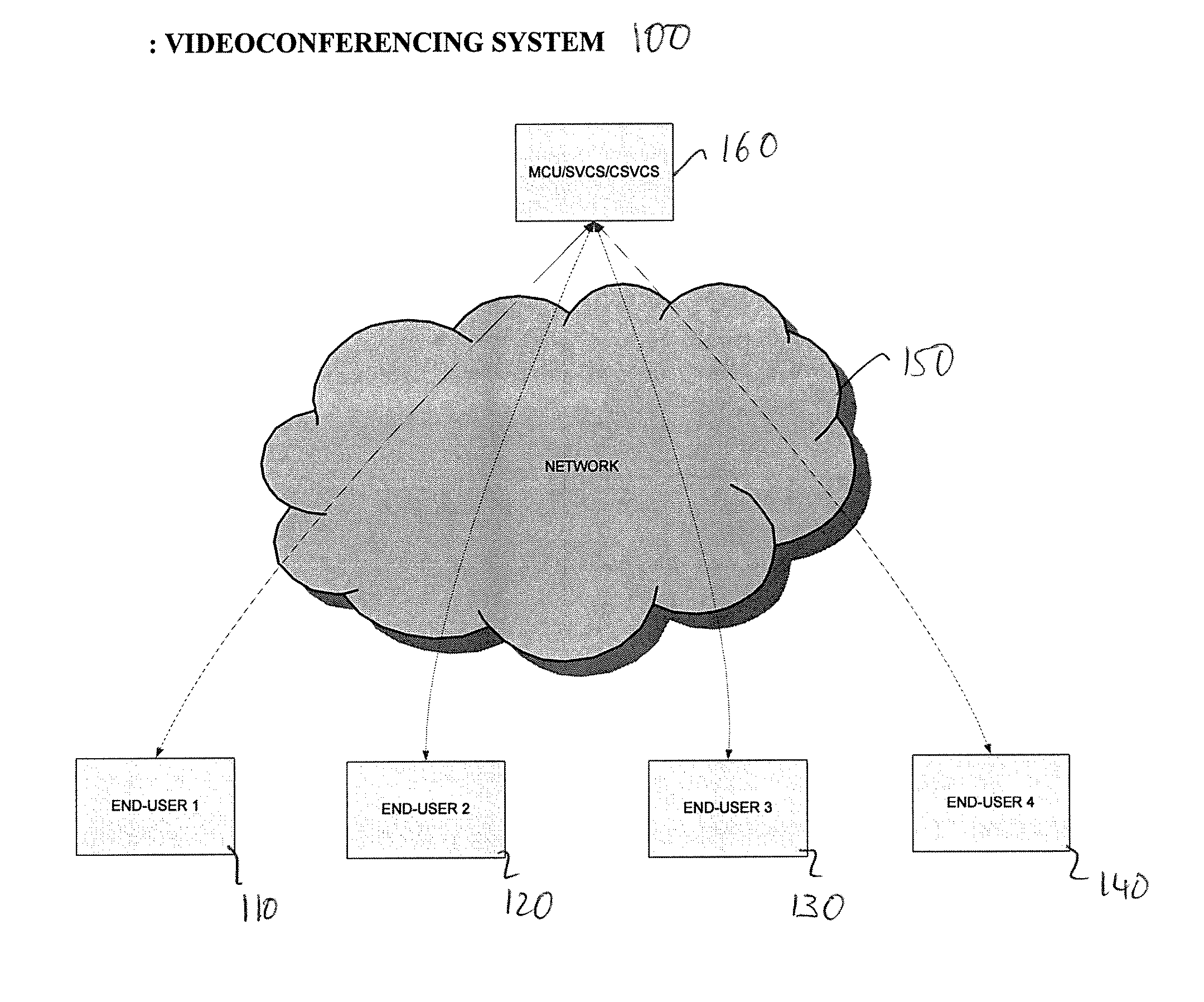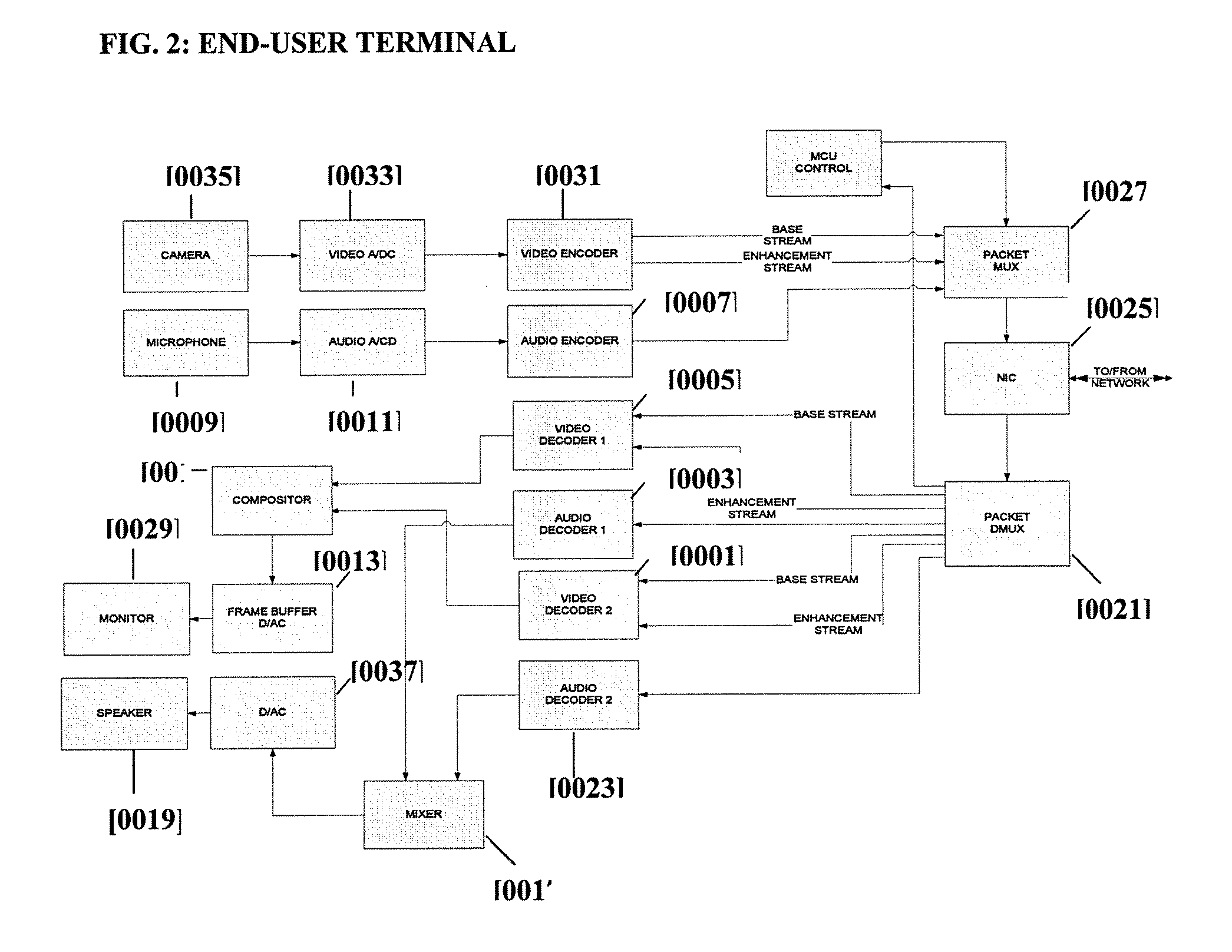System And Method For Thinning Of Scalable Video Coding Bit-Streams
a video coding and bit-stream technology, applied in the field of multimedia and telecommunications technology, can solve the problems of increasing the cost and complexity of scalable coding, requiring significant computational resources, and adding significant subjective distortions to the video signal and delay of the video transmission, so as to achieve the effect of flexible processing of svc bit-streams
- Summary
- Abstract
- Description
- Claims
- Application Information
AI Technical Summary
Benefits of technology
Problems solved by technology
Method used
Image
Examples
Embodiment Construction
[0049] Video conferencing systems and methods based on SVC coding are provided. The systems and methods (collectively referred to herein as “SVC Thinning”) are designed to provide flexibility in processing SVC bitstreams for videoconferencing applications. In particular, SVC Thinning provides system and processing functionalities for selectively discarding or not transmitting SVC bitstream portions to receiver / endpoints in response to receiver / endpoints needs or properties.
[0050]FIG. 1 shows an exemplary embodiment of a videoconferencing system 100 having SVC Thinning functionalities according to the present invention. System 100 may include a plurality of end-user terminals 110-140, a network 150, and one or more MCU / SVCS / CSVCS 160. The network enables communication between the end-user terminals and the MCU / SVCS / CSVCS. The SVC Thinning functionalities described herein may be placed in MCU / SVCS / CSVCS 160, or in one or more endpoints (e.g. 110-140).
[0051] In system 100, an end-use...
PUM
 Login to View More
Login to View More Abstract
Description
Claims
Application Information
 Login to View More
Login to View More - R&D
- Intellectual Property
- Life Sciences
- Materials
- Tech Scout
- Unparalleled Data Quality
- Higher Quality Content
- 60% Fewer Hallucinations
Browse by: Latest US Patents, China's latest patents, Technical Efficacy Thesaurus, Application Domain, Technology Topic, Popular Technical Reports.
© 2025 PatSnap. All rights reserved.Legal|Privacy policy|Modern Slavery Act Transparency Statement|Sitemap|About US| Contact US: help@patsnap.com



